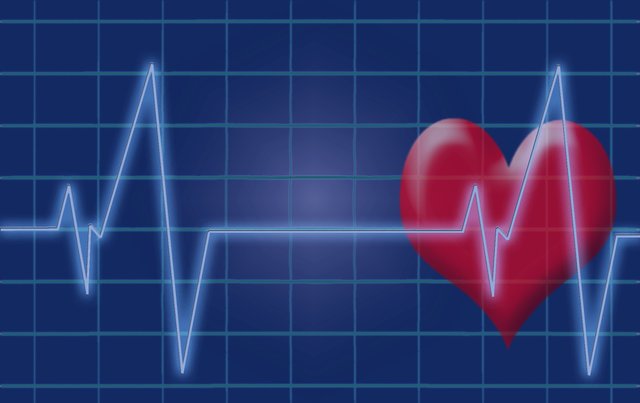
Pixabay The word cholesterol is coined from three Greek words,chole which means bile, steros which means solid and ol which means alcohol. Cholesterol was first isolated from the bile stones by Pouller de Salle in 1758. Almost all nucleated cells can synthesis cholesterol. It is widely distributed in the body. In a 70kg man,a total of about 140g of cholesterol is available,which is widely distributed as 30g in brain and nerves,30g in adipose tissue,30g in muscles,20g in the skin,10g in the the liver and spleen,10g in the blood,5g in the bone marrow,3g in alimentary track,and 2g in the adrenal gland.
Cholesterol is a light yellow crystalline solid. When the crystals are examine under microscope,they show a notched appearance. Cholesterol is soluble in chloroform and other fat solvent.It is the most important animal steroid from which other steroids compound are formed from. Cholesterol are widely distributed in animal tissues but absent in procaryotes. Plants don't contain cholesterol, instead they are made up of sterols
STRUCTURE OF CHOLESTEROL
All steroids have cyclopentano perhydro phenanthrene ring system. It is a fused ring system made up of 3 cyclohexane rings designated as A,B and C and a cyclopentane ring D. The six-membered rings are in a phenanthrene arrangement.It is made up of a total of 27 carbon atoms,one hydroxy group is attached at the third position which is a characteristic of all sterols. The hydroxy group is beta-oriented,projecting above the plane of the ring. There is a double bond between the carbon atoms of number 5 and 6.
BIOSYNTHESIS OF CHOLESTEROL
All the carbon atoms of cholesterol are derived from acetyl coA. The biosynthetic pathway of cholesterol was described by Sir John Cornforth and Vladimir Prelog and were both awarded Nobel prize in 1975 for their discovery. The major sites of cholesterol synthesis are the liver, adrenal cortex,testes, ovaries and intestines. All nucleated cells can synthesis cholesterol, including arterial walls.The enzymes involved in the synthesis of cholesterol are partly located in endoplasmic reticulum and partly in the cytoplasm. The synthesis of cholesterol involves 7 steps or stages.
REGULATION OF CHOLESTEROL SYNTHESIS
At the transcription stage,the regulation of cholesterol synthesis is by the enzyme HMG CoA reductase (Beta-hydroxy beta-methyl glutaryl CoA reductase). Long-term regulation involves regulation of transcription of gene for HMG CoA reductase. When sufficient cholesterol is present in the cell, transcription of the gene for HMG CoA reductase is suppressed,and cellular synthesis of cholesterol is present is decreased. When cholesterol in diet is low, it's synthesis is increased. Insulin and thyroxine increase the activity of HMG CoA reductase while cortisol and glucagon decrease its activity.
EXCRETION OF CHOLESTEROL
An average diet contains about 300mg of cholesterol per day. The body synthesizes about 700mg of cholesterol per day,out of this 1000mg of cholesterol, about 500mg is excreted through the bile.This cholesterol is partly reabsorbed from the intestines. Vegetables contain plant sterols which inhibit the reabsorption of cholesterol,this unabsorbed portion of cholesterol is acted upon by intestinal bacteria to form cholestanol and coprostanol.These are excreted through the faeces. Another 500mg of cholesterol is converted to bile acids which are excreted in the bile as bile salts.
FUNCTIONS OF CHOLESTEROL
Cholesterol is a component of the cell membranes and has a modulating effect on fluid state of the membrane. Cholesterol also has an insulating effect on nerve fibers. Bile acids and bile salts which are derived from cholesterol are important for the absorption of fats. Some hormones like glucocorticoids, androgens and estrogens are derived from cholesterol.
CLINICAL SIGNIFICANCE OF CHOLESTEROL
The level of cholesterol in the blood is related to the development of atherosclerosis and myocardial infarction. Abnormality of cholesterol metabolism may lead to cardiovascular accident and heart attacks.
References
PubChem, National Library of Medicine, US National Institutes of Health. 9 November 2019. Retrieved 14 November 2019.
Safety (MSDS) data for cholesterol". Archived from the original on 12 July 2007. Retrieved 20 October 2007.
Cholesterol at the US National Library of Medicine Medical Subject Headings (MeSH)
Hanukoglu I (December 1992). "Steroidogenic enzymes: structure, function, and role in regulation of steroid hormone biosynthesis". The Journal of Steroid Biochemistry and Molecular Biology. 43 (8): 779–804. doi:10.1016/0960-0760(92)90307-5. PMID 22217824. S2CID 112729.
Razin S, Tully JG (May 1970). "Cholesterol requirement of mycoplasmas". Journal of Bacteriology. 102 (2): 306–10. doi:10.1128/JB.102.2.306-310.1970. PMC 247552. PMID 4911537.
You have done a great work
Downvoting a post can decrease pending rewards and make it less visible. Common reasons:
Submit
Thanks
Downvoting a post can decrease pending rewards and make it less visible. Common reasons:
Submit
Great work dear..
Downvoting a post can decrease pending rewards and make it less visible. Common reasons:
Submit
Thanks dear
Downvoting a post can decrease pending rewards and make it less visible. Common reasons:
Submit
Well written
Downvoting a post can decrease pending rewards and make it less visible. Common reasons:
Submit
Thanks brother
Downvoting a post can decrease pending rewards and make it less visible. Common reasons:
Submit
Good one keep it up
Downvoting a post can decrease pending rewards and make it less visible. Common reasons:
Submit
Thanks brother
Downvoting a post can decrease pending rewards and make it less visible. Common reasons:
Submit